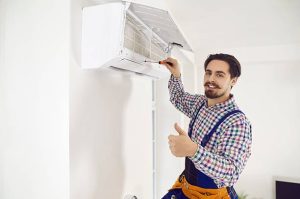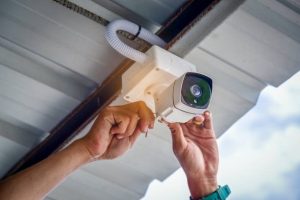
Repairing a garage door spring requires careful attention and adherence to safety procedures, as these components are under significant tension. The first step in addressing a broken or malfunctioning garage door spring is to identify the type of spring installed on your door. There are primarily two types: torsion springs, which are mounted above the door, and extension springs located on either side of the door tracks. Understanding the type will guide you in selecting appropriate tools and replacement parts.
Before beginning any repair work, disconnect the garage door opener to prevent accidental activation during the process. It’s essential to ensure that no electrical power is connected to avoid potential hazards. Next, secure the garage door repair near me in place by clamping it or using locking pliers on the tracks just below one of the bottom rollers; this prevents unexpected movement while you work with high-tension springs.
Garage door company
For torsion spring replacement, start by unwinding any remaining tension carefully using winding bars designed specifically for this purpose. Never use screwdrivers or other improvised tools as they can slip and cause injury. Loosen the set screws on the winding cone slowly until all tension has been released from the spring. Once unwound safely, remove bolts attaching the old spring from its mounting bracket and slide it off the torsion bar.
When installing a new torsion spring, position it correctly on the bar with its stationary cone secured firmly against its bracket. Tighten mounting bolts securely before winding up new tension following manufacturer specifications closely. Use winding bars again for this step and count turns accurately based on your door weight and size information provided by your supplier.
Extension springs require a different approach since they stretch along horizontal rails beside your garage door tracks. Begin by removing safety cables threaded through these springs if present; this cable prevents dangerous recoil if a spring snaps unexpectedly. Unhook both ends of each broken extension spring from their mounting points carefully while supporting their weight.
Install new extension springs by hooking them back onto their brackets at both ends. Re-thread safety cables through each new spring before securing them tightly with clamps or fasteners supplied with your replacement parts. After installation completes for either type of spring, remove all clamps holding your garage door closed and reconnect your automatic opener system if applicable.
Test your garage door manually several times for smooth operation without binding or excessive noise before relying on motorized opening again. If unsure about handling these repairs safely or accurately measuring required tension levels for proper balance, consult professional technicians who specialize in garage doors rather than risking injury or damage through DIY attempts alone. Proper maintenance following repairs can extend lifespan significantly while ensuring consistent performance day after day without unexpected failures occurring suddenly during use.
Don’s Garage Door Repair
5940 Paonia Ct Colorado Springs, CO 80915
719-378-4227






